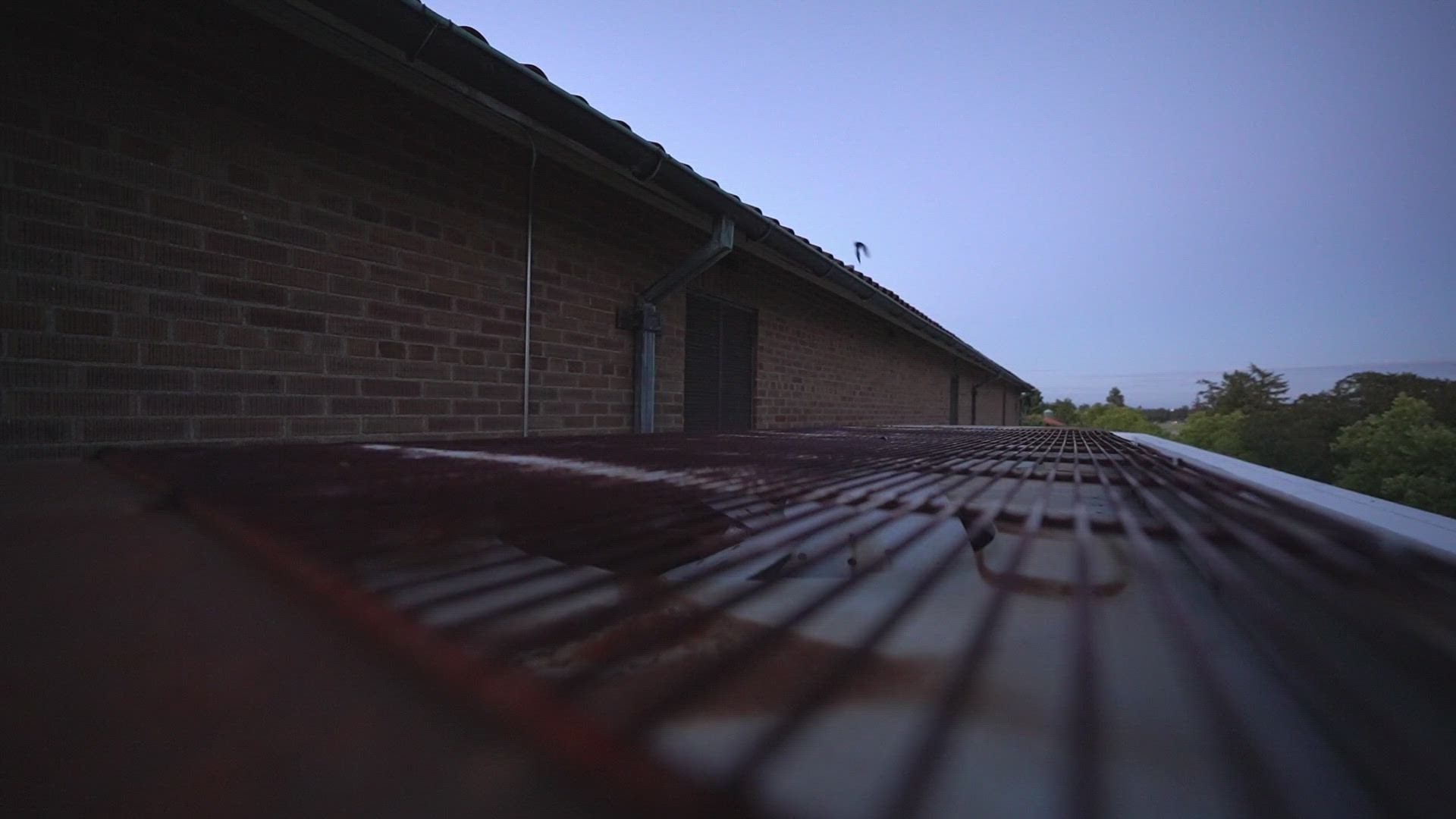LAKEWOOD, Wash. — For more than 150 years Western State Hospital, just south of Tacoma, has cared for the state's most vulnerable psychiatric patients.
A clinical setting, that unbeknown to many, also served as a natural habitat for a small, flying, federally protected species of animal. A symbiotic relationship that can reveal beautiful, if not unexpected pairings.
“Bats are living in the rooftops of people’s homes, in their trees all over Washington,” said Michelle Tirhi, a wildlife biologist for the Washington Department of Fish and Wildlife.
“They’re trying to provide habitat and maintain habitat for animals and allow animals to co-exist but they’re also trying to run a hospital that has patients in it,” Tirhi said.
Western State Hospital in Lakewood predates Washington state, serving psychiatric patients since its formation in 1871. A historic building with dark cool crawlspaces and enough space between clay tiles to make a perfect bat habitat.
“They have found a home here, they’ve found space here, they have not caused a problem in 30 years that we’re aware of and so far everything is working fine,” Tirhi said.
Armed with state-of-the-art monitoring equipment complete with night vision goggles, Tirhi and her team are on a mission to find out just how large the brown bat population really is. And about thirty minutes after sunset the bats don’t disappoint. The yearly count would not be possible without volunteers.
“No matter how many deer I see, how many bats I see, I think of it as a spiritual thanks from the earth,” said volunteer Caitlin Cheney.
She describes the tiny, winged mammal that’s most active after sunset – on the hunt for as many mosquitos as it can find.
“When people hear that they just think of the wildlife in a whole different light. How much more productive and positive they are for the whole ecology system,” Cheney continued.
This year’s bat count is especially important as the historic property is getting a major upgrade. Specifically, the complete removal of building 21 – aka, the bat house.
“We plan to start demolition, physical demolition of the buildings in Fall of 2023 and so far the bat migration pattern lines up perfectly where they leave their home nest before we go into demolition they’ll come back and some of those homes in 21 will be gone,” said Tyler Sloan, a civil engineer employed by the state’s Department of Social and Health Services.
DSHS is working to preserve the historic value of the hospital and protect a naturally occurring bat habitat while at the same time caring for patients.
“So the bats are in their own happy locations on these hospital grounds and the people are in a separate location – the world is good everybody is happy,” Tirhi said.

